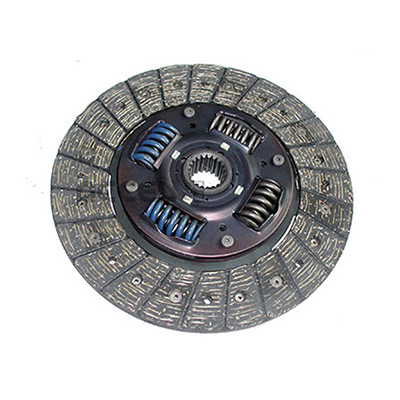- Arabic
- French
- Russian
- Spanish
- Portuguese
- Turkish
- Armenian
- English
- Albanian
- Amharic
- Azerbaijani
- Basque
- Belarusian
- Bengali
- Bosnian
- Bulgarian
- Catalan
- Cebuano
- Corsican
- Croatian
- Czech
- Danish
- Dutch
- Afrikaans
- Esperanto
- Estonian
- Finnish
- Frisian
- Galician
- Georgian
- German
- Greek
- Gujarati
- Haitian Creole
- hausa
- hawaiian
- Hebrew
- Hindi
- Miao
- Hungarian
- Icelandic
- igbo
- Indonesian
- irish
- Italian
- Japanese
- Javanese
- Kannada
- kazakh
- Khmer
- Rwandese
- Korean
- Kurdish
- Kyrgyz
- Lao
- Latin
- Latvian
- Lithuanian
- Luxembourgish
- Macedonian
- Malgashi
- Malay
- Malayalam
- Maltese
- Maori
- Marathi
- Mongolian
- Myanmar
- Nepali
- Norwegian
- Norwegian
- Occitan
- Pashto
- Persian
- Polish
- Punjabi
- Romanian
- Samoan
- Scottish Gaelic
- Serbian
- Sesotho
- Shona
- Sindhi
- Sinhala
- Slovak
- Slovenian
- Somali
- Sundanese
- Swahili
- Swedish
- Tagalog
- Tajik
- Tamil
- Tatar
- Telugu
- Thai
- Turkmen
- Ukrainian
- Urdu
- Uighur
- Uzbek
- Vietnamese
- Welsh
- Bantu
- Yiddish
- Yoruba
- Zulu
جولائی . 29, 2024 21:57 Back to list
Understanding the Importance of Engine Accessory Drive Belts and Their Maintenance Needs for Longevity
Understanding the Engine Accessory Drive Belt Function and Importance
The engine accessory drive belt, commonly known as the serpentine belt, plays a crucial role in the functionality of a vehicle’s engine. This vital component is responsible for driving multiple peripheral devices that are essential for the overall operation of the vehicle, including the alternator, power steering pump, water pump, air conditioning compressor, and sometimes even the vacuum pump. Understanding its function, maintenance needs, and potential issues is essential for car owners and enthusiasts alike.
Function of the Engine Accessory Drive Belt
The engine accessory drive belt is designed to transmit power from the engine's crankshaft to various accessories. In modern vehicles, this is typically achieved through a single, long belt that winds around several pulleys, significantly simplifying the design and reducing weight compared to older systems that utilized multiple belts. The belt is made from a durable rubber composite that is resistant to wear and heat, providing the necessary flexibility to handle the movements within the engine compartment.
One of the most critical aspects of the serpentine belt’s function is its ability to maintain the power supply to essential components. The alternator is perhaps the most significant accessory dependent on this belt, as it is responsible for charging the vehicle’s battery and powering the electrical systems when the engine is running. Simultaneously, the power steering pump assisted by the serpentine belt provides ease in steering, while the water pump ensures that the engine remains cool by circulating coolant. Furthermore, the air conditioning compressor, also driven by this belt, plays a vital role in cabin comfort, especially in warmer climates.
Maintenance and Inspection
engine accessory drive belt

Proper maintenance of the engine accessory drive belt is essential for avoiding potential issues that could lead to costly repairs. Most manufacturers suggest inspecting the belt at regular intervals, typically around every 30,000 to 50,000 miles, or during routine oil changes. Signs of wear may include cracks, fraying, or glaze on the belt surface. Any visible damage can result in reduced performance or complete failure, which could leave you stranded or cause additional damage to connected components.
Replacing the serpentine belt is generally a straightforward process, but it is crucial to do so before signs of severe wear appear. Many vehicles feature a belt tensioner that helps maintain the appropriate tension. If the tensioner fails, it can lead to belt slippage or misalignment, causing further complications. Keeping this system in good working order is vital for the longevity of the belt itself and the performance of the accessories it drives.
Common Issues and Symptoms
A failing engine accessory drive belt can present several warning signs. A distinctive squeaking or chirping noise when the engine is running may indicate that the belt is worn or slipping. If the belt breaks, it can lead to critical failures, such as overheating due to a non-functioning water pump or loss of power steering. Additionally, dashboard warning lights may illuminate, signaling problems related to the battery or engine overheating.
In conclusion, the engine accessory drive belt is an essential component that significantly impacts a vehicle’s overall performance and reliability. Regular maintenance and timely inspections are crucial for ensuring that this belt functions properly. By staying informed about the signs of wear and understanding the belt's role in vehicle operation, car owners can contribute to the longevity and efficiency of their vehicles, ultimately promoting a safer and more enjoyable driving experience.
-
Korean Auto Parts Timing Belt 24312-37500 For Hyundai/Kia
NewsMar.07,2025
-
7PK2300 90916-T2024 RIBBED BELT POLY V BELT PK BELT
NewsMar.07,2025
-
Chinese Auto Belt Factory 310-2M-22 For BMW/Mercedes-Benz
NewsMar.07,2025
-
Chinese Auto Belt Factory 310-2M-22 For BMW/Mercedes-Benz
NewsMar.07,2025
-
90916-02660 PK Belt 6PK1680 For Toyota
NewsMar.07,2025
-
drive belt serpentine belt
NewsMar.07,2025

